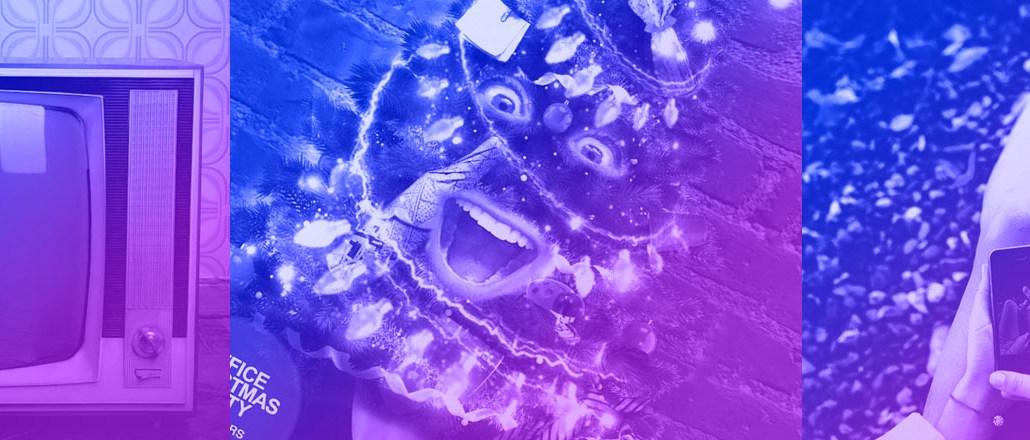Brands to grab a beer with: Four native roles brands can play in 2017

by Shaul Olmert, CEO, Playbuzz
Today’s consumers don’t want to be advertised to. But they love their digital content, branded or not.
It’s no surprise then that native advertising has become the cornerstone of many a savvy brand’s ad strategy, and why such ads are becoming more and more like the content their target audiences are already consuming. In the interest of truly getting native, here are four roles for brands to play on the platforms where they’re displaying content.
1. Brands as friends
Which brand would you like to grab a beer with? Beer brands hope it’s theirs, of course. But they’re not alone. Social platforms like Instagram and Snapchat have become popular platforms for all kinds of brands that just want to be friends —friends you pay. Instagram, for example, does this by creating ads that look like your friends’ photos—at first glance, they may as well be your friends drinking at the beach, but as you look closer, you realize that their faces are obscured by beer bottles with the logos prominently displayed. They are not your friends at all, but models in a native Miller High Life ad.
Ad position: web_incontent_pos1
Brands also sneak into consumers’ friends’ Snapchat Stories with interstitials—ads that piggy back onto your last Story. The tactic allows brands to look like they’re part of that story. By the time users realize they’re not, the native ad may well have already enticed them.
Another way for brands to appear friend-like on Snapchat is through their own Stories. A recent Story for the movie “Office Christmas Party” begins with snaps of regular folks you might be connected to through friends in which they share their holiday gripes, but it ends with actor T.J. Miller promoting the film in a style that mimics the “friend” clips that precede it.
2. Brands as in-app features
Ad position: web_incontent_pos2
Snapchat’s appeal has evolved from its disappearing pics into a wide range of Filters and Lenses. Who doesn’t want to see their friend as a sexy deer? Though a smaller retailer might like to try using its own branded, native Snapchat features, it’s prohibitively expensive. However, the high price implies that big brands are opting for this kind of in-app native advertising.
And big brands means big brands—including Disney, Starbucks, and major Hollywood films like, once again, “Office Christmas Party.” (‘Tis the season, after all.)
The “Office Christmas Party” Lens that transforms a user’s face into a Christmas tree is entertaining, and the branding (a small circle with the movie’s title in the bottom corner) is minimal. It’s also built so seamlessly into the Snapchat experience that average users might not realize it’s an ad. Forget primetime television—native Snapchat is the premium advertising spot for non-linear TV-watching millennials and Gen Z.
3. Brands as engagement builders
Don’t act like you don’t want to know which Hogwarts house you’d be sorted into or what your favorite food says about your personality. Interactive ads like flip cards and personality quizzes are an Internet favorite, but consumers will (naturally) shy away if they smell too strongly of advertising. Native—when done well—crushes the barrier between haters and the content they’ll likely enjoy, if they’d just give it a chance.
Getting consumers to interact with native ads is a huge win for brands, especially when readers share their quiz results with friends or click to buy. For example, this quiz Playbuzz worked on with Unilever food giant Knorr (which appears as native content on Food Network UK’s website, among others) invites users to share their results with friends to see how “compatible” they are. What better way to get a consumer to organically share an advertisement with their friends?
4. Brands as happy customers
If a brand’s native advertising platform of choice is social, the featured campaign will likely star “real people,” aka actual customers versus models or celebrities.
E-commerce jewelry retailer BaubleBar makes their native Instagram ads “feel almost like a testimonial,” says co-founder Daniella Yacobovsky. That means eschewing the “high-end camera, photo-shopping and retouching” approach for a more natural alternative shot on an iPhone featuring customers. Yacobovsky said that “this really natural testimonial feel performs much better.”
How much better? BaubleBar has seen ads with real people deliver 120 percent higher ROAS than ads starring models.
Over time, brands have refined their roles as native advertisers. They went from adopting broad “storyteller” identities to better fit with publishers’ overall editorial to honing in on the specific formats those publishers and platforms are most likely to use. As full-fledged engagement builders, brands have hit on important native roles—and those that haven’t must consider doing so in 2017.
More in Marketing

In the marketing world, anime is following in the footsteps of gaming
As marketers look to take advantage of anime’s entry into the zeitgeist, they might be wise to observe the parallels between the evolution of anime as a marketing channel and the ways brands have learned to better leverage gaming in recent years.

With the introduction of video ads and e-commerce, Roblox looks to attain platform status
Roblox is expanding into more areas than just ads in 2024. Much like platforms such as Amazon and Facebook have transcended their origins to evolve from their origins as online marketplaces and social media channels, Roblox is in the midst of a transformation into a platform for all elements of users’ virtual lives.

PepsiCo wants to remain a ‘driver of culture’ as it turns to influencers and activations amid rebrand
The soda-maker says it can translate cultural relevance into sales volume.
Ad position: web_bfu